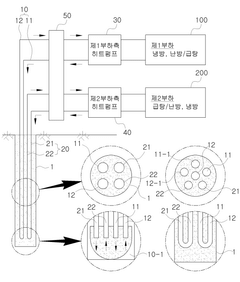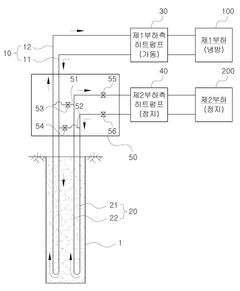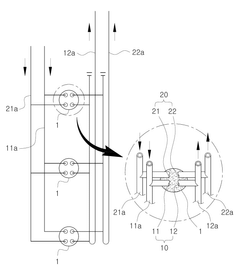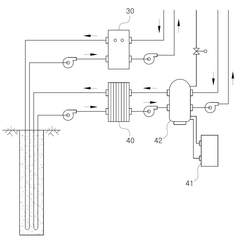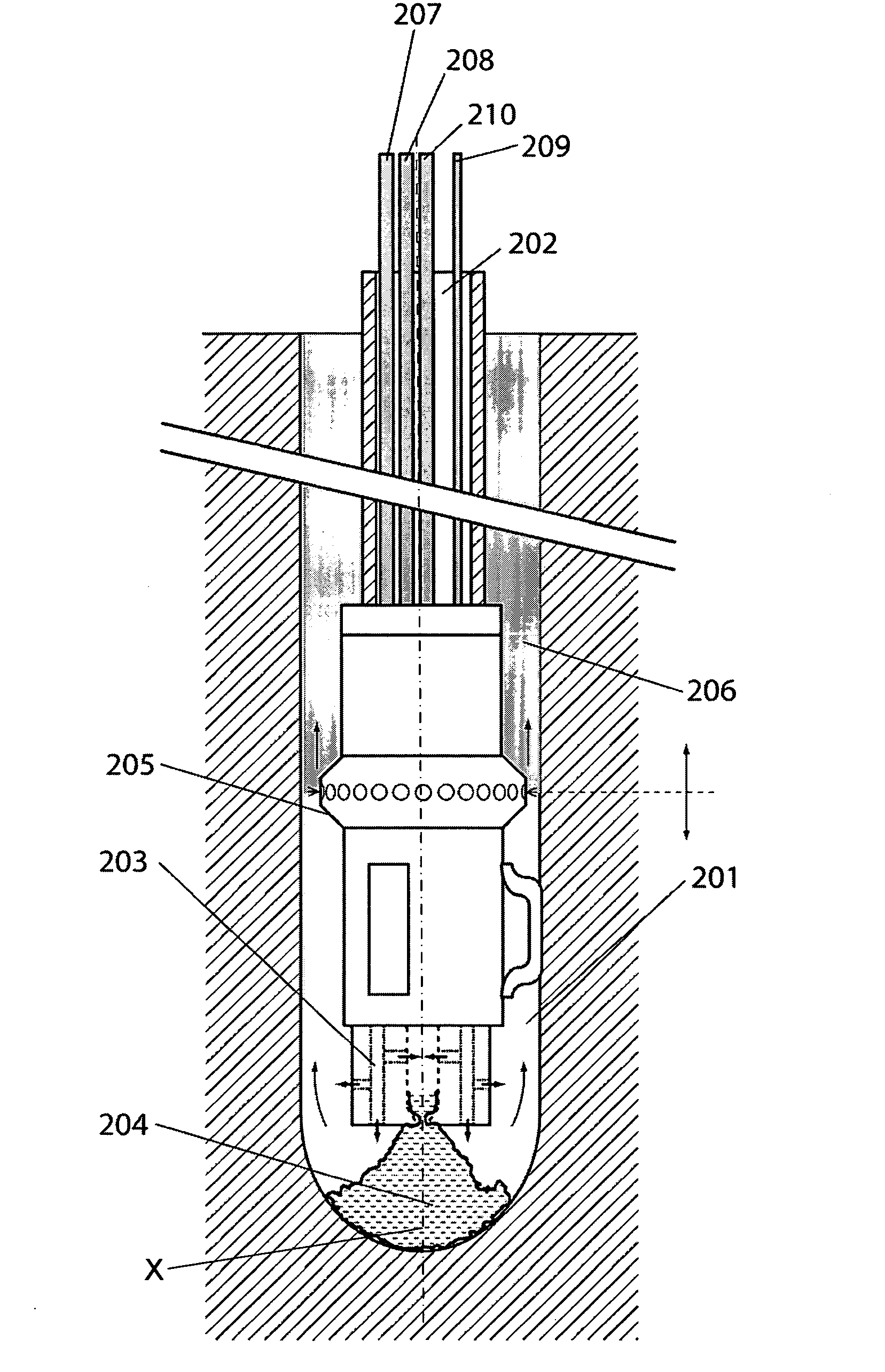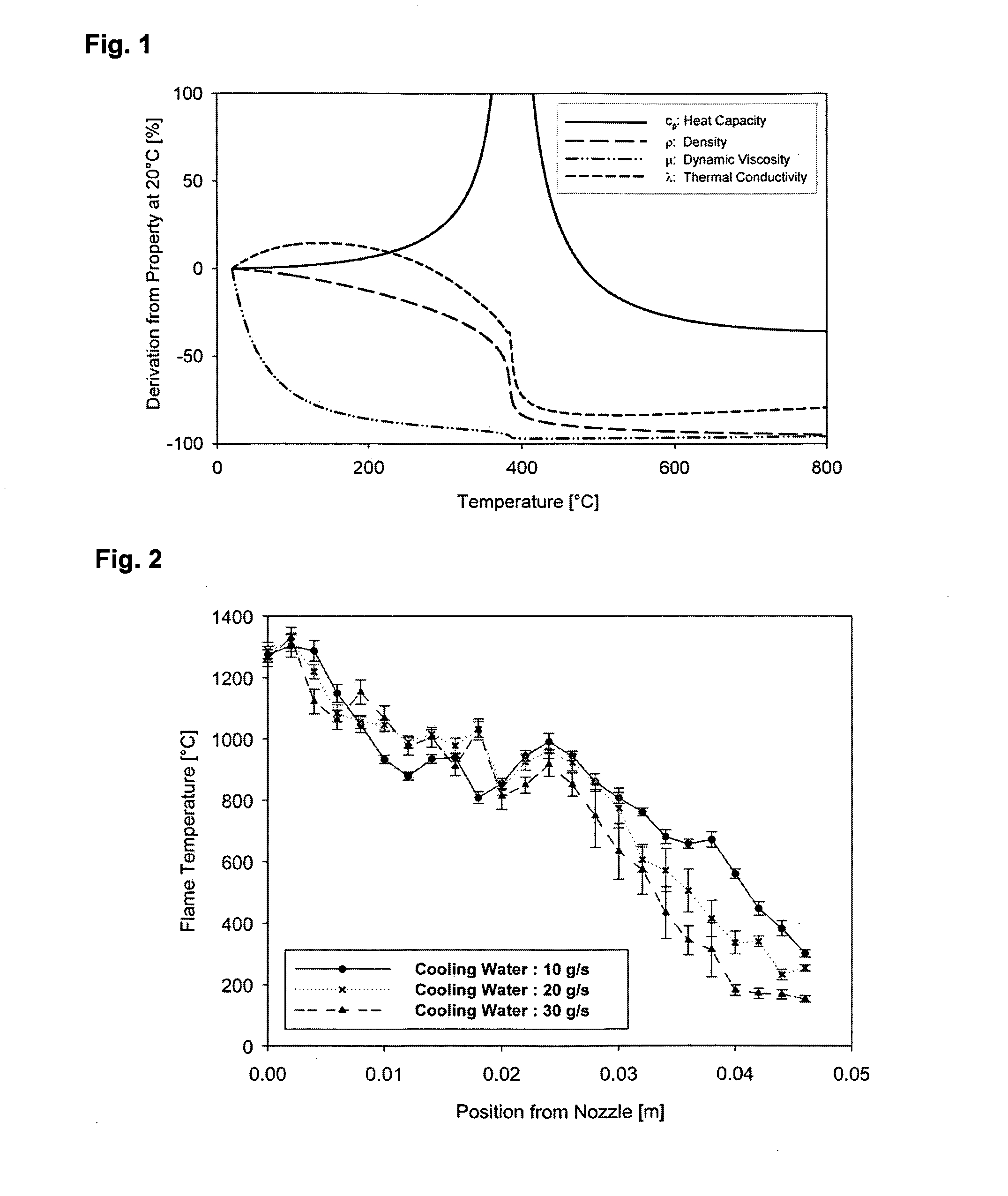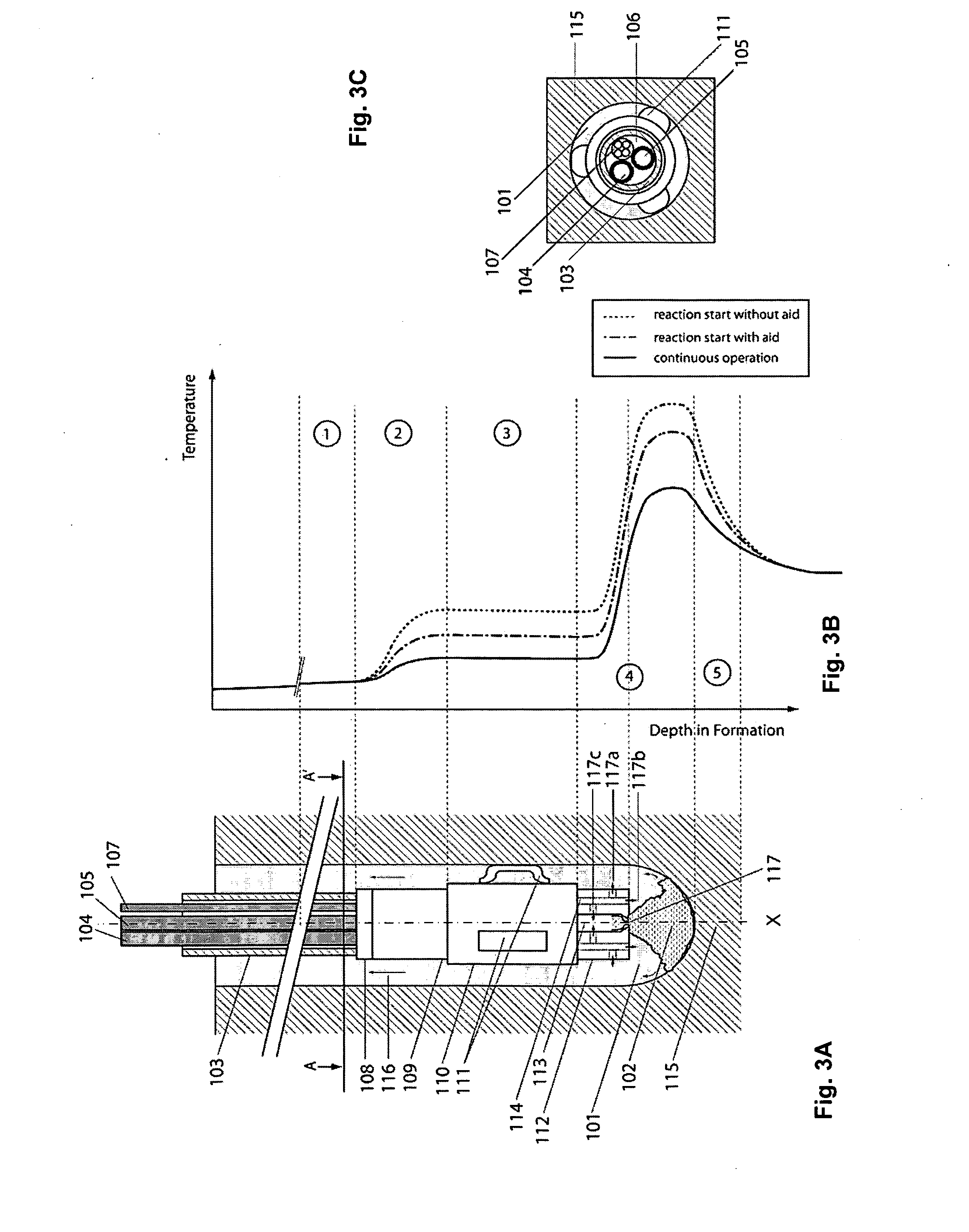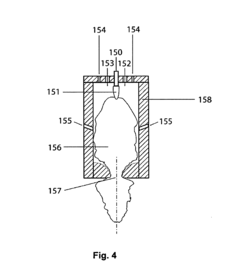Mapping Magmatic Versus Phreatic Impacts on Peridotite
JUL 24, 20259 MIN READ
Generate Your Research Report Instantly with AI Agent
Patsnap Eureka helps you evaluate technical feasibility & market potential.
Peridotite Alteration Background and Objectives
Peridotite, a dense, coarse-grained igneous rock, plays a crucial role in understanding Earth's mantle composition and geological processes. The study of peridotite alteration has gained significant attention in recent years due to its implications for mantle dynamics, plate tectonics, and potential carbon sequestration applications. This research aims to map and differentiate between magmatic and phreatic impacts on peridotite, providing valuable insights into the complex interactions between these rocks and various geological processes.
The evolution of peridotite alteration research spans several decades, with early studies focusing primarily on descriptive mineralogy and petrology. As analytical techniques advanced, researchers began to explore the geochemical and isotopic signatures associated with different alteration processes. Recent technological developments, such as high-resolution imaging and in-situ analytical methods, have further enhanced our ability to investigate the fine-scale alterations in peridotite samples.
The primary objective of this study is to develop a comprehensive mapping methodology that can distinguish between magmatic and phreatic alteration effects on peridotite. Magmatic alteration typically occurs at high temperatures and involves interaction with magmatic fluids, while phreatic alteration is associated with lower-temperature hydrothermal processes. Differentiating between these two types of alteration is crucial for understanding the thermal and fluid history of peridotite bodies and their surrounding geological environments.
By mapping these distinct alteration patterns, we aim to shed light on the complex interplay between magmatic and hydrothermal processes in various geological settings. This research has implications for understanding the formation and evolution of oceanic crust, the dynamics of subduction zones, and the potential for carbon sequestration in ultramafic rocks. Additionally, the findings may contribute to our knowledge of ore deposit formation, particularly in ophiolite complexes where peridotites are often associated with valuable mineral resources.
The technological advancements in analytical techniques, such as high-resolution electron microscopy, synchrotron-based X-ray spectroscopy, and laser ablation mass spectrometry, have opened new avenues for investigating peridotite alteration at unprecedented spatial and chemical resolutions. These tools allow for the detection and characterization of subtle mineralogical and geochemical changes that may hold key information about the nature and extent of alteration processes.
As we embark on this research, we anticipate that the results will not only advance our understanding of peridotite alteration but also provide valuable insights into broader geological processes. The ability to accurately map and differentiate between magmatic and phreatic impacts on peridotite has the potential to refine models of mantle dynamics, improve our understanding of fluid-rock interactions in the Earth's interior, and contribute to the development of more effective carbon sequestration strategies in ultramafic rocks.
The evolution of peridotite alteration research spans several decades, with early studies focusing primarily on descriptive mineralogy and petrology. As analytical techniques advanced, researchers began to explore the geochemical and isotopic signatures associated with different alteration processes. Recent technological developments, such as high-resolution imaging and in-situ analytical methods, have further enhanced our ability to investigate the fine-scale alterations in peridotite samples.
The primary objective of this study is to develop a comprehensive mapping methodology that can distinguish between magmatic and phreatic alteration effects on peridotite. Magmatic alteration typically occurs at high temperatures and involves interaction with magmatic fluids, while phreatic alteration is associated with lower-temperature hydrothermal processes. Differentiating between these two types of alteration is crucial for understanding the thermal and fluid history of peridotite bodies and their surrounding geological environments.
By mapping these distinct alteration patterns, we aim to shed light on the complex interplay between magmatic and hydrothermal processes in various geological settings. This research has implications for understanding the formation and evolution of oceanic crust, the dynamics of subduction zones, and the potential for carbon sequestration in ultramafic rocks. Additionally, the findings may contribute to our knowledge of ore deposit formation, particularly in ophiolite complexes where peridotites are often associated with valuable mineral resources.
The technological advancements in analytical techniques, such as high-resolution electron microscopy, synchrotron-based X-ray spectroscopy, and laser ablation mass spectrometry, have opened new avenues for investigating peridotite alteration at unprecedented spatial and chemical resolutions. These tools allow for the detection and characterization of subtle mineralogical and geochemical changes that may hold key information about the nature and extent of alteration processes.
As we embark on this research, we anticipate that the results will not only advance our understanding of peridotite alteration but also provide valuable insights into broader geological processes. The ability to accurately map and differentiate between magmatic and phreatic impacts on peridotite has the potential to refine models of mantle dynamics, improve our understanding of fluid-rock interactions in the Earth's interior, and contribute to the development of more effective carbon sequestration strategies in ultramafic rocks.
Geological Significance of Magmatic vs Phreatic Impacts
The geological significance of magmatic versus phreatic impacts on peridotite lies in their distinct mechanisms and resulting effects on the rock's composition, structure, and surrounding environment. Magmatic impacts involve direct interaction between molten magma and peridotite, leading to significant thermal and chemical alterations. This process can result in partial melting, recrystallization, and the formation of new mineral assemblages within the peridotite.
Conversely, phreatic impacts are characterized by the interaction between superheated water or steam and peridotite, often occurring in hydrothermal systems or during volcanic eruptions. These impacts primarily cause physical and hydrothermal alterations, such as fracturing, brecciation, and the formation of secondary minerals through fluid-rock interactions.
The distinction between magmatic and phreatic impacts is crucial for understanding the geological history and evolution of peridotite-bearing regions. Magmatic impacts provide insights into the deep Earth processes, mantle dynamics, and magma generation mechanisms. They can reveal information about the composition of the upper mantle, magma sources, and the thermal state of the lithosphere.
Phreatic impacts, on the other hand, offer valuable information about near-surface processes, hydrothermal activity, and the role of fluids in modifying peridotite. These impacts can indicate the presence of active geothermal systems, volcanic activity, or tectonic processes that facilitate fluid circulation through the rock.
The study of magmatic versus phreatic impacts on peridotite has significant implications for various geological disciplines. In petrology and geochemistry, it helps in understanding the alteration processes and element mobility within the Earth's mantle. For volcanology, it provides insights into eruption mechanisms and the interaction between magmatic and hydrothermal systems.
Furthermore, the distinction between these impacts is essential for economic geology, as it can influence the formation and distribution of mineral deposits associated with peridotite. Magmatic impacts may lead to the concentration of valuable elements such as platinum group metals, while phreatic impacts can result in the formation of secondary mineral deposits or geothermal resources.
In the context of plate tectonics and mantle dynamics, mapping magmatic versus phreatic impacts on peridotite can help reconstruct the tectonic history of a region, identify zones of mantle upwelling, and understand the processes of lithospheric thinning and extension. This information is crucial for developing comprehensive models of Earth's geodynamics and the evolution of oceanic and continental lithosphere.
Conversely, phreatic impacts are characterized by the interaction between superheated water or steam and peridotite, often occurring in hydrothermal systems or during volcanic eruptions. These impacts primarily cause physical and hydrothermal alterations, such as fracturing, brecciation, and the formation of secondary minerals through fluid-rock interactions.
The distinction between magmatic and phreatic impacts is crucial for understanding the geological history and evolution of peridotite-bearing regions. Magmatic impacts provide insights into the deep Earth processes, mantle dynamics, and magma generation mechanisms. They can reveal information about the composition of the upper mantle, magma sources, and the thermal state of the lithosphere.
Phreatic impacts, on the other hand, offer valuable information about near-surface processes, hydrothermal activity, and the role of fluids in modifying peridotite. These impacts can indicate the presence of active geothermal systems, volcanic activity, or tectonic processes that facilitate fluid circulation through the rock.
The study of magmatic versus phreatic impacts on peridotite has significant implications for various geological disciplines. In petrology and geochemistry, it helps in understanding the alteration processes and element mobility within the Earth's mantle. For volcanology, it provides insights into eruption mechanisms and the interaction between magmatic and hydrothermal systems.
Furthermore, the distinction between these impacts is essential for economic geology, as it can influence the formation and distribution of mineral deposits associated with peridotite. Magmatic impacts may lead to the concentration of valuable elements such as platinum group metals, while phreatic impacts can result in the formation of secondary mineral deposits or geothermal resources.
In the context of plate tectonics and mantle dynamics, mapping magmatic versus phreatic impacts on peridotite can help reconstruct the tectonic history of a region, identify zones of mantle upwelling, and understand the processes of lithospheric thinning and extension. This information is crucial for developing comprehensive models of Earth's geodynamics and the evolution of oceanic and continental lithosphere.
Current Challenges in Peridotite Impact Mapping
The mapping of magmatic versus phreatic impacts on peridotite presents several significant challenges in the current scientific landscape. One of the primary difficulties lies in distinguishing between the two types of impacts due to their often similar surface expressions. Magmatic impacts, resulting from direct contact with molten material, and phreatic impacts, caused by steam explosions, can both lead to alteration and deformation of peridotite structures, making differentiation complex.
Remote sensing techniques, while valuable, often lack the resolution to definitively identify the nature of impacts on peridotite outcrops. This limitation is particularly pronounced in areas with dense vegetation cover or in regions where peridotite exposures are limited or weathered. The spectral signatures of altered peridotites can be ambiguous, further complicating the accurate mapping of impact types.
Field-based investigations, crucial for ground-truthing remote sensing data, face logistical challenges in accessing many peridotite-rich areas. These regions are often in remote, mountainous, or submarine environments, making comprehensive surveys time-consuming and expensive. Additionally, the heterogeneous nature of peridotite bodies means that impacts can vary significantly over short distances, requiring high-density sampling for accurate mapping.
The temporal aspect of impact mapping adds another layer of complexity. Magmatic and phreatic events can occur in cycles or simultaneously, leading to overprinting of features. This temporal variability makes it difficult to establish clear chronologies of impact events and to distinguish between primary and secondary alteration features in peridotite outcrops.
Geochemical analysis, while powerful, also presents challenges. The alteration of peridotite by both magmatic and phreatic processes can result in similar elemental mobilization patterns, making geochemical fingerprinting of impact types less straightforward than in other geological contexts. Moreover, the high variability in peridotite compositions adds complexity to establishing baseline geochemical signatures for unaltered rocks.
Technological limitations in current analytical methods also contribute to the challenges. While advanced techniques like hyperspectral imaging and high-resolution geophysical surveys offer promising avenues for impact mapping, their application in peridotite-rich terrains is still in its early stages. The integration of multiple data types (e.g., spectral, geochemical, and structural) remains a significant challenge, requiring sophisticated data fusion and interpretation methodologies.
Lastly, the interdisciplinary nature of peridotite impact mapping necessitates collaboration between geologists, geochemists, remote sensing specialists, and data scientists. Coordinating such diverse expertise and integrating varied methodologies presents organizational and interpretational challenges that must be overcome to advance our understanding of magmatic versus phreatic impacts on peridotite.
Remote sensing techniques, while valuable, often lack the resolution to definitively identify the nature of impacts on peridotite outcrops. This limitation is particularly pronounced in areas with dense vegetation cover or in regions where peridotite exposures are limited or weathered. The spectral signatures of altered peridotites can be ambiguous, further complicating the accurate mapping of impact types.
Field-based investigations, crucial for ground-truthing remote sensing data, face logistical challenges in accessing many peridotite-rich areas. These regions are often in remote, mountainous, or submarine environments, making comprehensive surveys time-consuming and expensive. Additionally, the heterogeneous nature of peridotite bodies means that impacts can vary significantly over short distances, requiring high-density sampling for accurate mapping.
The temporal aspect of impact mapping adds another layer of complexity. Magmatic and phreatic events can occur in cycles or simultaneously, leading to overprinting of features. This temporal variability makes it difficult to establish clear chronologies of impact events and to distinguish between primary and secondary alteration features in peridotite outcrops.
Geochemical analysis, while powerful, also presents challenges. The alteration of peridotite by both magmatic and phreatic processes can result in similar elemental mobilization patterns, making geochemical fingerprinting of impact types less straightforward than in other geological contexts. Moreover, the high variability in peridotite compositions adds complexity to establishing baseline geochemical signatures for unaltered rocks.
Technological limitations in current analytical methods also contribute to the challenges. While advanced techniques like hyperspectral imaging and high-resolution geophysical surveys offer promising avenues for impact mapping, their application in peridotite-rich terrains is still in its early stages. The integration of multiple data types (e.g., spectral, geochemical, and structural) remains a significant challenge, requiring sophisticated data fusion and interpretation methodologies.
Lastly, the interdisciplinary nature of peridotite impact mapping necessitates collaboration between geologists, geochemists, remote sensing specialists, and data scientists. Coordinating such diverse expertise and integrating varied methodologies presents organizational and interpretational challenges that must be overcome to advance our understanding of magmatic versus phreatic impacts on peridotite.
Existing Methodologies for Impact Differentiation
01 Geological impact of peridotite
Peridotite, a dense igneous rock, has significant geological impacts. Its presence can affect the composition and structure of the Earth's crust and upper mantle. The interaction of peridotite with other geological formations can lead to various mineralogical and geochemical processes, influencing the formation of valuable mineral deposits and contributing to the understanding of plate tectonics and mantle dynamics.- Geological impact of peridotite: Peridotite, a dense igneous rock, has significant geological impacts. It plays a crucial role in the Earth's mantle and can be exposed at the surface through tectonic processes. The presence of peridotite can influence local geology, mineral formations, and potentially affect seismic activity in certain regions.
- Carbon sequestration potential of peridotite: Peridotite has shown promising potential for carbon sequestration due to its chemical composition. When exposed to carbon dioxide and water, it can undergo a process called mineral carbonation, effectively trapping atmospheric CO2. This property makes peridotite a subject of interest in climate change mitigation strategies.
- Industrial applications of peridotite: Peridotite has various industrial applications due to its unique properties. It can be used in the production of refractory materials, as a source of magnesium and other minerals, and in the manufacturing of certain types of ceramics. The rock's heat-resistant properties make it valuable in high-temperature industrial processes.
- Environmental impact of peridotite mining: The mining of peridotite can have significant environmental impacts. These may include habitat destruction, changes in local hydrology, and potential release of heavy metals or asbestos-like minerals. Sustainable mining practices and environmental management strategies are crucial when extracting peridotite to minimize negative effects on ecosystems.
- Peridotite in planetary science: Peridotite is not only significant on Earth but also plays a role in planetary science. It is believed to be a major component of the mantles of terrestrial planets and some moons. Studying peridotite can provide insights into the formation and evolution of planetary bodies, including potential habitability of exoplanets.
02 Environmental applications of peridotite
Peridotite has potential environmental applications, particularly in carbon sequestration. Due to its chemical composition, peridotite can react with carbon dioxide to form carbonate minerals, effectively trapping atmospheric CO2. This property makes peridotite a promising material for developing carbon capture and storage technologies, potentially mitigating the impacts of climate change.Expand Specific Solutions03 Industrial uses of peridotite
Peridotite finds various industrial applications due to its unique properties. It can be used as a refractory material in high-temperature industrial processes, as a source of magnesium and other minerals, and in the production of certain types of ceramics. The rock's heat-resistant properties make it valuable in manufacturing processes that require materials capable of withstanding extreme temperatures.Expand Specific Solutions04 Peridotite in extraterrestrial studies
Peridotite plays a crucial role in extraterrestrial studies and planetary science. Its presence in meteorites and its similarity to materials found on other celestial bodies provide valuable insights into the formation and evolution of planets and asteroids. Studying peridotite in this context helps scientists understand the composition of planetary mantles and the processes of planetary differentiation.Expand Specific Solutions05 Peridotite in geothermal energy exploration
Peridotite formations are of interest in geothermal energy exploration. The rock's thermal properties and its association with certain geological settings make it a potential indicator of geothermal resources. Understanding the distribution and characteristics of peridotite can aid in identifying and developing geothermal energy sources, contributing to renewable energy initiatives.Expand Specific Solutions
Key Research Institutions in Peridotite Studies
The mapping of magmatic versus phreatic impacts on peridotite represents a niche area within geological research, currently in its early developmental stages. The market size remains relatively small, primarily driven by academic institutions and specialized research organizations. Key players like China Petroleum & Chemical Corp., Rutgers State University, and USGS are at the forefront of this research, leveraging their expertise in geosciences and advanced analytical techniques. The technology is still in its infancy, with ongoing efforts to refine methodologies and improve data interpretation. As the field progresses, we can expect increased collaboration between industry leaders and academic institutions to enhance our understanding of these geological processes and their implications.
China Petroleum & Chemical Corp.
Technical Solution: China Petroleum & Chemical Corp. (Sinopec) has developed a comprehensive approach to mapping magmatic versus phreatic impacts on peridotite, focusing on applications in petroleum exploration and geothermal energy development. Their methodology integrates traditional geological mapping techniques with advanced geophysical surveys and geochemical analyses. Sinopec utilizes high-resolution gravity and magnetic surveys to delineate the extent of peridotite bodies and identify potential fluid pathways[10]. They have also developed specialized seismic processing algorithms to enhance the imaging of altered peridotite zones in complex geological settings[11]. Additionally, Sinopec employs advanced fluid inclusion studies and trace element geochemistry to distinguish between magmatic and phreatic alteration fluids, providing insights into the thermal and chemical evolution of peridotite-hosted hydrothermal systems[12].
Strengths: Comprehensive integration of geophysical and geochemical techniques, strong focus on practical applications in energy exploration. Weaknesses: Potential bias towards hydrocarbon-bearing settings, may overlook some aspects of fundamental peridotite alteration processes.
Rutgers State University of New Jersey
Technical Solution: Rutgers has developed a multi-disciplinary approach to mapping magmatic versus phreatic impacts on peridotite. Their method combines detailed field studies with advanced geochemical and isotopic analyses. They use portable X-ray fluorescence (pXRF) devices for rapid in-situ elemental analysis of peridotite outcrops, allowing for real-time discrimination between magmatic and phreatic alteration signatures[2]. Rutgers researchers have also pioneered the use of stable isotope geochemistry, particularly oxygen and hydrogen isotopes, to trace fluid-rock interactions and distinguish between magmatic and meteoric water sources in altered peridotites[4]. Additionally, they have developed novel mineralogical indicators, such as the presence and composition of secondary minerals, to further refine their mapping techniques[6].
Strengths: High-resolution geochemical data, innovative use of isotope geochemistry, and strong field-based approach. Weaknesses: Labor-intensive methodology and potential limitations in large-scale regional mapping.
Innovative Approaches in Peridotite Impact Analysis
Geothermal system including a combined heat source underground heat exchanger
PatentActiveKR1020240111681A
Innovation
- A geothermal system with a composite heat source ground heat exchanger using first and second load-side heat pumps to balance ground heat by circulating opposing temperature heat sources through first and second ground heat exchangers, connected via a switching mechanism to manage heat medium circulation based on load requirements.
Rock drilling in great depths by thermal fragmentation using highly exothermic reactions evolving in the environment of a water-based drilling fluid
PatentInactiveUS20110303460A1
Innovation
- A method and downhole assembly for thermal spallation drilling that utilizes an exothermic chemical reaction within a water-based drilling fluid at high pressures, generating a hydrothermal flame to fragment rock, allowing operation in aqueous environments and reducing drill bit replacement needs.
Environmental Implications of Peridotite Alteration
The alteration of peridotite, a key component in Earth's mantle, has significant environmental implications that extend beyond geological processes. As peridotite interacts with water and other fluids, it undergoes serpentinization, a process that can lead to the sequestration of carbon dioxide and the release of methane and hydrogen. These reactions play a crucial role in global carbon cycling and have the potential to influence climate change.
The environmental impact of peridotite alteration is particularly evident in oceanic settings, where large expanses of mantle rock are exposed to seawater. As serpentinization progresses, it can create unique ecosystems around hydrothermal vents, supporting diverse microbial communities that thrive on the chemical energy produced by these reactions. These ecosystems serve as potential analogs for early life on Earth and possibly other planetary bodies.
On land, peridotite alteration can affect soil composition and water chemistry. The weathering of peridotite-rich areas can lead to the formation of soils with high concentrations of heavy metals, which may have both positive and negative impacts on local flora and fauna. Some plants have adapted to these metal-rich environments, developing unique mechanisms for metal tolerance or hyperaccumulation, which could be exploited for phytoremediation purposes.
The alteration of peridotite also has implications for water resources. In some regions, serpentinized peridotite can act as a natural water purifier, removing contaminants through mineral adsorption and precipitation reactions. However, these same processes can sometimes lead to the release of potentially harmful elements into groundwater, affecting water quality for human consumption and agricultural use.
From a climate perspective, the potential of peridotite alteration for carbon sequestration has garnered significant attention. Enhanced weathering of peridotite has been proposed as a geoengineering strategy to mitigate rising atmospheric CO2 levels. While promising, this approach requires careful consideration of potential environmental impacts, including changes to local ecosystems and the mobilization of trace elements.
Understanding the environmental implications of peridotite alteration is crucial for assessing both natural processes and potential human interventions. As research in this field progresses, it will be essential to consider the complex interplay between geological, chemical, and biological systems to fully appreciate the far-reaching effects of these alteration processes on our planet's environment.
The environmental impact of peridotite alteration is particularly evident in oceanic settings, where large expanses of mantle rock are exposed to seawater. As serpentinization progresses, it can create unique ecosystems around hydrothermal vents, supporting diverse microbial communities that thrive on the chemical energy produced by these reactions. These ecosystems serve as potential analogs for early life on Earth and possibly other planetary bodies.
On land, peridotite alteration can affect soil composition and water chemistry. The weathering of peridotite-rich areas can lead to the formation of soils with high concentrations of heavy metals, which may have both positive and negative impacts on local flora and fauna. Some plants have adapted to these metal-rich environments, developing unique mechanisms for metal tolerance or hyperaccumulation, which could be exploited for phytoremediation purposes.
The alteration of peridotite also has implications for water resources. In some regions, serpentinized peridotite can act as a natural water purifier, removing contaminants through mineral adsorption and precipitation reactions. However, these same processes can sometimes lead to the release of potentially harmful elements into groundwater, affecting water quality for human consumption and agricultural use.
From a climate perspective, the potential of peridotite alteration for carbon sequestration has garnered significant attention. Enhanced weathering of peridotite has been proposed as a geoengineering strategy to mitigate rising atmospheric CO2 levels. While promising, this approach requires careful consideration of potential environmental impacts, including changes to local ecosystems and the mobilization of trace elements.
Understanding the environmental implications of peridotite alteration is crucial for assessing both natural processes and potential human interventions. As research in this field progresses, it will be essential to consider the complex interplay between geological, chemical, and biological systems to fully appreciate the far-reaching effects of these alteration processes on our planet's environment.
Geochemical Markers for Impact Type Identification
Geochemical markers play a crucial role in distinguishing between magmatic and phreatic impacts on peridotite. These markers provide valuable insights into the nature of the impact event and the subsequent alteration processes that affect the rock.
Magmatic impacts typically result in the formation of high-temperature minerals and glasses, which can be identified through geochemical analysis. The presence of impact melt products, such as tektites or impact glasses, is a strong indicator of a magmatic impact. These materials often exhibit elevated concentrations of siderophile elements, particularly platinum group elements (PGEs), due to the incorporation of meteoritic material during the impact event.
In contrast, phreatic impacts are characterized by lower-temperature processes and the interaction of water with the target rock. Geochemical markers for phreatic impacts include the presence of hydrous minerals, such as serpentine and chlorite, which form through the hydration of olivine and pyroxene in peridotite. Additionally, the alteration of primary minerals may result in the mobilization and redistribution of certain elements, leading to distinct geochemical signatures.
Stable isotope analysis can provide further evidence for distinguishing between magmatic and phreatic impacts. Oxygen isotope ratios in impact-altered peridotite can reveal the extent of fluid-rock interaction, with phreatic impacts typically showing a greater degree of isotopic exchange with meteoric or hydrothermal fluids. Similarly, hydrogen isotope analysis of hydrous minerals can help constrain the source of fluids involved in the impact process.
Trace element patterns can also serve as effective geochemical markers. Magmatic impacts often result in the enrichment of incompatible elements in impact melts, while phreatic impacts may lead to the leaching and mobilization of certain elements. Rare earth element (REE) patterns, in particular, can be useful in identifying the nature of the impact, as magmatic impacts tend to preserve the original REE signature of the peridotite, while phreatic impacts may cause fractionation and redistribution of REEs.
The presence of shock-induced microstructures and high-pressure polymorphs in minerals can provide additional evidence for magmatic impacts. These features, such as planar deformation features in quartz or the formation of coesite, are typically absent in phreatic impacts due to the lower pressures and temperatures involved.
By combining multiple geochemical markers and analytical techniques, researchers can develop a comprehensive understanding of the impact type and its effects on peridotite. This multi-proxy approach allows for more accurate mapping and characterization of impact sites, contributing to our knowledge of impact processes and their geological consequences.
Magmatic impacts typically result in the formation of high-temperature minerals and glasses, which can be identified through geochemical analysis. The presence of impact melt products, such as tektites or impact glasses, is a strong indicator of a magmatic impact. These materials often exhibit elevated concentrations of siderophile elements, particularly platinum group elements (PGEs), due to the incorporation of meteoritic material during the impact event.
In contrast, phreatic impacts are characterized by lower-temperature processes and the interaction of water with the target rock. Geochemical markers for phreatic impacts include the presence of hydrous minerals, such as serpentine and chlorite, which form through the hydration of olivine and pyroxene in peridotite. Additionally, the alteration of primary minerals may result in the mobilization and redistribution of certain elements, leading to distinct geochemical signatures.
Stable isotope analysis can provide further evidence for distinguishing between magmatic and phreatic impacts. Oxygen isotope ratios in impact-altered peridotite can reveal the extent of fluid-rock interaction, with phreatic impacts typically showing a greater degree of isotopic exchange with meteoric or hydrothermal fluids. Similarly, hydrogen isotope analysis of hydrous minerals can help constrain the source of fluids involved in the impact process.
Trace element patterns can also serve as effective geochemical markers. Magmatic impacts often result in the enrichment of incompatible elements in impact melts, while phreatic impacts may lead to the leaching and mobilization of certain elements. Rare earth element (REE) patterns, in particular, can be useful in identifying the nature of the impact, as magmatic impacts tend to preserve the original REE signature of the peridotite, while phreatic impacts may cause fractionation and redistribution of REEs.
The presence of shock-induced microstructures and high-pressure polymorphs in minerals can provide additional evidence for magmatic impacts. These features, such as planar deformation features in quartz or the formation of coesite, are typically absent in phreatic impacts due to the lower pressures and temperatures involved.
By combining multiple geochemical markers and analytical techniques, researchers can develop a comprehensive understanding of the impact type and its effects on peridotite. This multi-proxy approach allows for more accurate mapping and characterization of impact sites, contributing to our knowledge of impact processes and their geological consequences.
Unlock deeper insights with Patsnap Eureka Quick Research — get a full tech report to explore trends and direct your research. Try now!
Generate Your Research Report Instantly with AI Agent
Supercharge your innovation with Patsnap Eureka AI Agent Platform!
